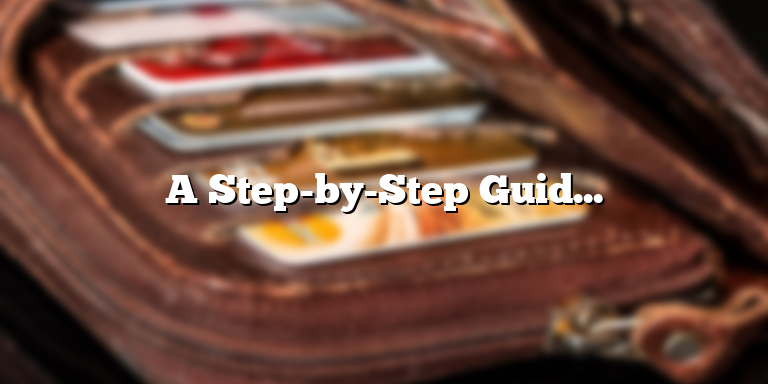
Understanding the Basics of Reading Greens
Reading greens is a skill that can take years to master, but everyone can learn the basics to get started. The most important factors to consider when reading greens are slope, speed, and grain. Once you understand these three elements, you will be able to interpret the contours of the green and predict how your ball will roll.
Slope
Slope is one of the most crucial factors when reading greens. It is the degree of incline or decline of the green. Slope can either be positive or negative, with a positive slope meaning that the green slopes uphill towards the hole, and a negative slope indicating that it slopes downhill. The slope will impact the speed and direction of your ball, so it’s important to understand its severity and direction.
When approaching your shot, take a moment to assess the slope of the green, from your ball to the hole. Look for undulations, humps, and hollows as you walk up to the green. Once you’re on the green, crouch down and get a closer look at its overall slope. This will help you identify where to aim your putt and how much break to expect. When reading slopes, always aim for a spot where the ball can roll true on its way to the hole.
Speed
The speed of the green is another important factor when reading greens. The speed of the green will determine how hard you need to hit the ball to cover a particular distance. Greens can be slow or fast, and the speed of the greens can vary depending on several factors such as grass type, moisture, time of day or year, etc.
You can determine the speed of the green by observing how your ball moves when hit. If your ball seems to roll quickly, it means the green is fast, while if it seems to slow down, it means the green is slow. Another way to determine the speed of the green is by looking at the flagstick. The flag pin will give you an idea of wind direction and intensity, which can also affect the speed of the green.
Grain
Grain, which refers to the direction the grass blades grow on the green, is the third important factor to consider when reading greens. The grain can either be against or with the direction that the ball is rolling, and it can also vary across the green. Identifying the grain is key to determining how much break to expect when you are putting.
When reading the grain, look for the direction the grass blades are leaning. Grass blades that lean towards you mean that the grain is going against the direction of the ball, while those leaning away from you indicate that the grain is in the same direction as the ball. Once you’ve identified the grain, you can adjust your putting line depending on the degree of break that you expect. It’s important to putt with enough speed that the ball rolls true, despite the direction of the grain.
Understanding the basics of reading greens, including slope, speed, and grain, is an essential skill for any golfer. With practice and experience, you will be able to read greens with ease and make more accurate putts. Remember, every green is different, and you should pay attention to these factors, not just on different courses, but also on the same course throughout the day as grass conditions may change.
Paying Attention to Slope and Break
When it comes to reading greens, one of the most important factors is understanding the slope and break. Slope refers to the degree of incline or decline of the putting surface, while break refers to the direction in which the ball will roll as a result of the slope. By paying close attention to both slope and break, you can improve your putting accuracy and sink more putts.
To analyze the slope of the green, start by standing behind your ball and looking towards the hole. Visualize a line that connects your ball to the hole, known as the target line. Look for any subtle differences in elevation on the putting surface along this line. A slight upward slope towards the hole will make your putt roll slower, while a slight downward slope will make your putt roll faster. A more significant slope towards or away from the hole will require a larger adjustment in your aim and speed.
Break, on the other hand, refers to the direction in which the ball will roll as it encounters the slope. Look for any irregularities in the green that might influence the ball’s path, such as bumps, ridges, or contours. These will cause the ball to break towards the low side of the slope. For example, if the green slopes from left to right, the ball will break towards the right side of the hole. Similarly, if the green slopes from right to left, the ball will break towards the left side of the hole.
Another important aspect of reading break is speed. The faster the ball is moving, the less time it will spend on the slope and the less the slope will affect its path. This means that a slower putt will break more than a faster one. Keep this in mind when adjusting your aim to compensate for break.
It’s important to keep in mind that while technology such as green-reading books and line-perfecting tools can help with analyzing slope and break, there is no substitute for on-course experience and practice. Keep a mental record of where putts rolled to gather a better understanding of a particular green. Eventually, you will be able to read greens more proficiently and with more confidence, and you may even find that putting becomes one of your strengths on the course.
Assessing Green Speed and Conditions
When it comes to golf, putting is arguably the most important aspect of the game. Knowing how to read greens is key to making successful putts, but before you can start reading the slope and break, you need to assess the speed and conditions of the green. A green’s speed can vary depending on a number of factors and understanding these factors can help you make more accurate reads and sink more putts.
Moisture: One of the biggest factors that can affect the speed of a green is moisture. If a green is moist, the ball will have less roll and will likely move slower. On the other hand, a dry green will typically be faster and allow the ball to roll further. Different grass types may also respond differently to moisture, so knowing the type of grass on the green can help you adjust your putts accordingly.
Grass Type: Speaking of grass types, different types of grass can have a significant impact on green speed as well. For example, Bermuda grass grows quicker in warmer temperatures and may have faster green speeds in the summer months. Meanwhile, bentgrass is a more common grass type for golf courses in colder climates and may require more water to maintain a consistent speed.
Weather Conditions: While moisture is part of the weather conditions affecting green speed, there are other factors that can come into play as well. Wind, for example, can make a green faster or slower depending on the direction and strength of the gusts. Bright, sunny days can also lead to faster greens as the sun dries out any moisture and heats up the grass. Dark, overcast days, or rainy conditions, conversely, can lead to slower greens.
Knowing how these elements come together can help you better read a green and make successful putts. It’s important to take the time before each round to assess the green speed and conditions, observing the grass and weather patterns throughout the day. With enough practice, you’ll learn to analyze these factors quickly and adjust your strokes accordingly. Remember, the key to reading greens is to stay calm, focused, and above all, patient.
Using Alignment Aids and Visualization Techniques
If you’re having trouble reading greens, don’t worry, you’re not alone! Many golfers find it challenging to read greens and make accurate putts. Fortunately, there are tools and techniques that can help you improve your putting game. One such technique involves using alignment aids and visualization techniques.
Alignment aids are tools that can help you line up your putt correctly. For example, you can use a line on your golf ball to help you aim your putt towards the hole. Simply align the line on your ball with the line towards the hole and you’ll have a better chance of sinking your putt.
Another alignment aid that you can use is an aiming stick. This is a long, straight stick that you place on the ground to help you visualize the line towards the hole. Stand behind the stick and use it as a visual guide to see where you need to aim your putt.
Visualization techniques involve using your mind’s eye to see the putt before you hit it. This can help you get a better sense of the line and speed of the putt. To visualize your putt, stand behind the ball and look towards the hole. Try to see the ball rolling along the line that you want it to take. Imagine the ball dropping into the hole and visualize the perfect shot.
Once you’ve visualized your putt, take a practice swing to get a sense of the speed and distance of the shot. Use your visualization to guide your shot and try to recreate the same swing that you used during your practice shot. With practice, you’ll be able to read greens more accurately and make more putts.
It’s important to remember that putting is as much a mental game as it is a physical one. By using alignment aids and visualization techniques, you can improve your mental game and make more putts on the green. So the next time you’re struggling to read a green, try using an alignment aid or visualizing your putt and see if it makes a difference!
Practice and Adjusting Your Approach
Reading greens is a crucial element of playing golf and can be the key to lowering your scores. However, it’s not always an easy skill to master, and it can take a lot of practice and experience to become an expert. In this section, we’ll provide some tips on how to practice and adjust your approach to reading greens.
1. Practice Putting on Different Greens
The best way to improve your green reading ability is to practice on different greens. Golf courses can have different types of grass, slopes, and terrain that can affect the way a ball rolls. By practicing on different greens, you’ll develop a better sense of how to read the green and adjust your approach accordingly.
2. Use Your Eyes and Feet to Read Greens
To read a green effectively, you need to use both your eyes and your feet. You can visually examine the slope, texture, and color of the green to determine its speed and break. Additionally, you can walk the green and feel for any changes in gradient that may affect your putt. By using both your eyes and feet, you can get a more accurate understanding of the terrain and make a better judgment of how to approach your putt.
3. Adjust for the Course Conditions
The condition of the course can also affect your green reading strategies. For example, if the green is wet or has a lot of moisture, the ball may move slower than usual. If the sun is shining bright, the grass may dry out and make the ball move faster. Additionally, if the wind is blowing in a certain direction, it can affect how the ball moves. Pay attention to the course conditions and adjust your approach accordingly.
4. Analyze the Slope and Break of the Green
Another important factor in green reading is the slope and break of the green. Examine the terrain and check which way the green slopes. This can affect the speed of the ball and the angle at which it will break. Analyze the slope and break and make adjustments to your approach so that you can effectively sink your putt.
5. Consider Your Personal Preferences
Finally, keep in mind that green reading can also be a matter of personal preference. You might prefer to line up your putt from a certain angle or use a particular method to read the green. Experiment with different strategies and find what works best for you. By using your own personal preferences, you can develop a more effective and consistent approach to reading greens.
Remember, green reading is a skill that takes time and effort to develop. By practicing and adjusting your approach based on the course conditions and your own preferences, you can become more confident in sinking your putts and lowering your scores on the green.






